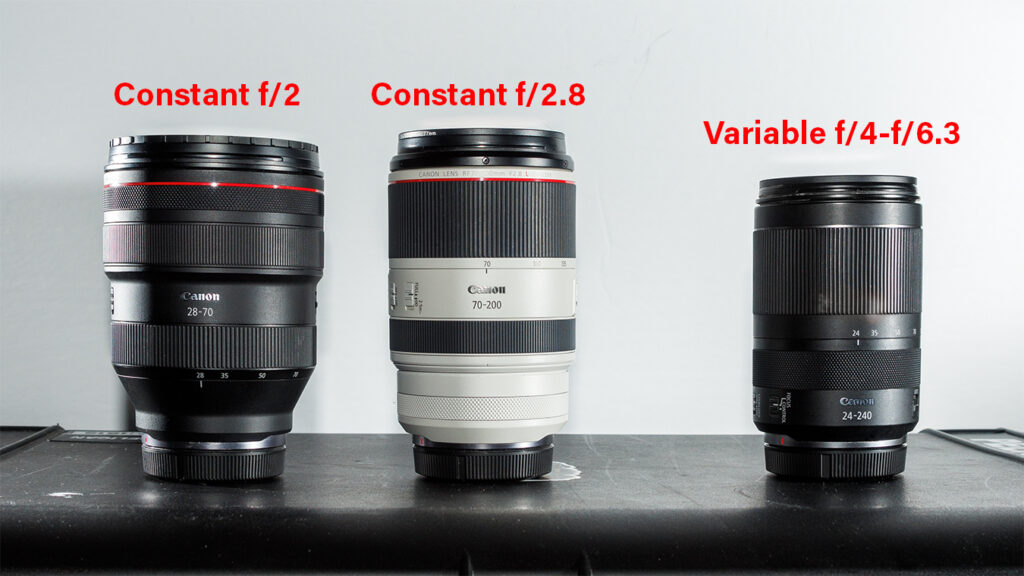Why do we have to buy multiple expensive lenses for different focal lengths when one super zoom lens will often cover the same range??? It seems very logical, right? Not only is it more convenient to only have one lens to use, it’s also a lot cheaper. Modern super zoom lenses can cover a wide range of focal lengths, typically somewhere within the 24-300mm range. And most people can afford lenses such as the Canon RF 24-240mm f/4-f/6.3, or the Tamron 28-200mm f/2.8 – f/5.6 zoom lenses. These lenses offer great quality images that when combined with modern cameras with advanced stabilization are easily able to get professional quality results. Despite all this many photographers still prefer to use prime lenses or constant aperture zooms that have wider apertures. Are professional photographers living in the past or are they still right about owning fast zooms and prime lenses?

Many photographers think that a larger aperture is better, and they’re right for many situations. Comparing the images from a 24-240mm lens to a fast 85mm f/1.4 or 135mm f/1.8 prime lens will show that while the 24-240mm can take perfectly usable pictures, the 85mm and 135mm primes can deliver impressive background separation and sharpness simultaneously. This puts all the focus on the subject and makes the image easy to view on any size screen or monitor. But does doing that automatically make your lens artistically superior? No, not automatically. It could be said that large aperture photography has become a bit passe’ with it appearing literally everywhere. Perhaps a super zoom offers a practical change of pace from the in your face blown out backgrounds that large apertures deliver. I’m not implying that the Tamron 28-200mm f/2.8 – f/5.6 has an unusable small aperture. The max aperture of f/2.8 is still really good for indoor photography. That is especially true if you have a camera that has IBIS built in. But, super zooms do have issues getting lots of background blur. Modern photographers and videographers love using big background blur essentially because it makes their job easier. When the details in the background are kind of blurred out the viewer’s imagination tends to fill in the blanks.
Another benefit of a larger aperture is that a larger aperture allows more light into the camera. More light in the camera equals less noise, lower ISO, and higher shutter speeds, all of which contribute to sharper and more impressive photos. Let’s say you’re using the lens indoor at a basketball game and assume all settings are the same except the shutter speed. The difference in shutter speed for the faster prime gives those photographers the ability to stop motion better in lowlight. For instance, if using a 135mm f/1.8 allows a shutter speed of 1/500th of a second, the super zoom at f/5.6 will be around 1/60th of a second. 1/60th is far too slow to stop the movement of the player running around on the court. In this case, a prime lens makes getting sharp pictures a lot easier. In order to do the same with the super zoom, a higher ISO will need to be used, probably around 3-4EVs higher which will usually translate into more noise in the image. To learn how ISO affects image quality click here.
Many photographers think of the zoom range in a super zoom as a form of flexibility and the same applies to the aperture range. A larger aperture gives the photographer more creative flexibility to control backgrounds, and better image quality in low light situations.
Super zoom lenses usually sacrifice a little bit of image quality and consistency of image quality in exchange for the extra zoom range. For those who are most concerned with immaculate image quality across the entire image they tend to go with prime lenses or expensive f/2.8 constant aperture zoom lenses. Generally speaking these lenses perform at least a little better than a super zoom does. However, don’t be shocked if these new super zooms are nearly as sharp as a prime in the middle of their zoom range. It’s usually at the extremes of the range, the widest and narrowest focal lengths where the quality falls off a little. In fact, one of the sharpest lenses I own is an old zoom lens. The Zeiss 28-80mm. It’s not as good across the board as a modern lens but it can give any lens on the planet a run for its money when it comes to resolution. The point is variable aperture zooms tend to be very sharp, especially when stopped down a bit.
If a lens has a variable aperture it means the aperture appears to change size (relative to the focal length) as the lens is zoomed in and out. The problem with that is the exposure changes as the focal length is changed. This can make using manual exposure or off camera lighting a bit of a pain. For professionals who are trying their best to achieve great images in camera a variable aperture adds something to the list of things that can go wrong from shot to shot. Technology has improved and in many situations auto exposure and ETTL are able to compensate for theses shifts in exposure.
While what we call a super zoom in photography is usually a 10x or greater zoom range, many super zooms used for TV and broadcast have 100x zoom ranges. These super zooms are very big and very expensive. When it comes to lens cost, these lenses are near the top of the heap. And yet, they only work with smaller image sensors called a 2/3rd sensor, which is even smaller than micro 4/3rds. The fact that a 100x zoom even exists is amazing, but equally unsurprising is how small the sensors are that these lenses work on. Despite dealing with such small sensors the lens is still very large, usually 50 pounds or more and designed solely to work on a tripod. With this in mind it highlights how good full frame 10x lenses are such as the RF 24-240mm. They deliver excellent quality at a reasonable cost and they do it for full frame sensors.
RF 24-240mm
Tamron 28-200mm
Crazy as it may seem to new photographers, some people don’t want to use a zoom lens. While it isn’t realistic to use prime lenses on every job for every situation, primes are often the practical and pragmatic choice. They’re not solely the artist’s tool or the obsessive professional’s tool. As mentioned above, for certain focal lengths, especially in the super telephoto range, a prime lens is the best option because primes are smaller and lighter and deliver amazing quality. However, for the middle range of focal lengths from 24-200mm it’s harder to argue against the latest crop of super zoom lenses. The lenses are very good, and today’s cameras can correct any distortion or corner shading in real time.
Despite the capabilities of modern superzooms there will always be those who believe that photography isn’t just about the end result, it’s also about the process, tools, and techniques that are used. Photographers with that mindset tend to prefer constant aperture zoom lenses or prime lenses with low distortion and excellent sharpness with no digital fixes required. There’s no right or wrong here it’s a matter of preference. If you can afford to be picky about your photography then constant aperture zooms or fast primes are a great option. If you can’t afford a half dozen lenses then there’s no shame in using a super zoom these days.




3 Comments
useful info, thanks
I’m a fifty yearlong photo hobbyist. Learned some new tricks here. Thanks for the information.
Glad you found the post useful Mandrake.